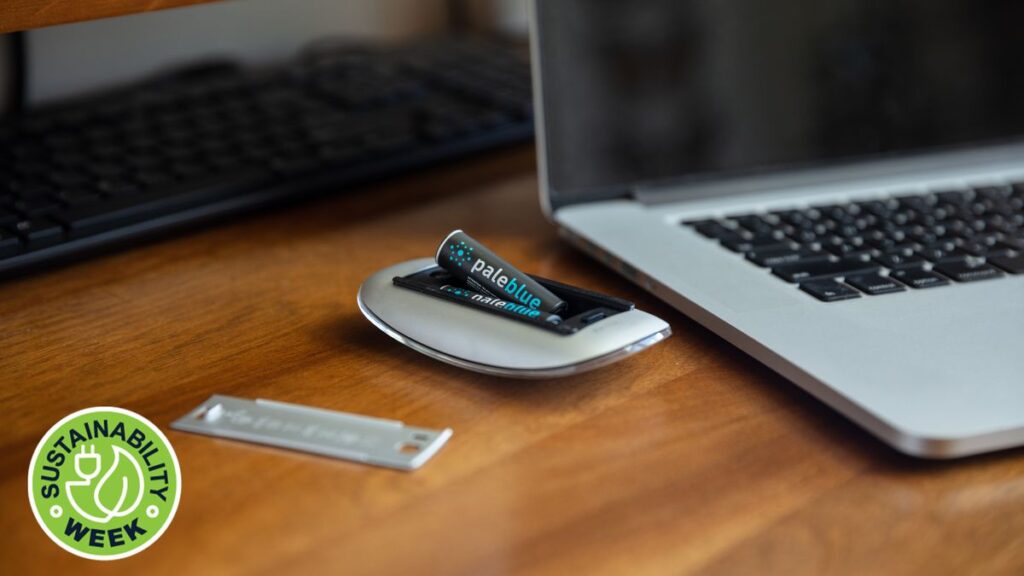Batteries with a difference
One company making strides in the realm of battery technology is Paleblue Earth, headquartered in Park City, Utah. The primary goal of Paleblue Earth is to reduce the environmental impact of disposable batteries by providing consumers with long-lasting and sustainable rechargeable options. Paleblue batteries come in various sizes, including AA, AAA, C, D, 9V, and CR-123A, and stand out from traditional rechargeable batteries due to their innovative USB-C charging feature.
Unlike conventional rechargeable batteries that often require separate charging cradles, Paleblue batteries are equipped with a USB-C port, allowing users to conveniently recharge them using a portable power bank. This not only streamlines the recharging process but also reduces the need for additional non-recyclable charging accessories that contribute to landfill waste.
With a rapid recharge time of approximately 1.5 hours, Paleblue batteries offer a quicker charging solution compared to other rechargeable alternatives available in the market. Additionally, being lithium-ion batteries, they are known for their enhanced safety and stability when compared to Nickel Metal Hydride (NiMH) or alkaline options.
What sets Paleblue batteries apart is their exceptional lifespan and sustainability. Each Paleblue battery is backed by a lifetime warranty and can undergo up to 1,000 charging cycles, equating to potentially replacing 4,000 single-use batteries. The company also ensures that their packaging is recyclable, further aligning with their eco-conscious ethos.
Although the initial cost of Paleblue batteries may be higher compared to traditional options, the long-term benefits and eco-friendly features outweigh the upfront investment. For instance, while a AA 4-pack of Paleblue batteries may cost $23.99 / AU$49.95, their durability and performance guarantee surpass that of standard choices like Duracell.
Are rechargeable batteries really sustainable?
While rechargeable batteries are regarded as a more sustainable choice, they do pose environmental challenges due to their toxic components. However, the longevity and reusability of rechargeable batteries offset their initial drawbacks. Research indicates that a rechargeable battery needs to be charged numerous times to outweigh its environmental impact compared to single-use alternatives.
Moreover, various countries have implemented battery recycling programs to address the disposal of rechargeable batteries responsibly. Organizations like Call2Recycle in the US and local collection points in the UK and Australia provide avenues for safely recycling rechargeable batteries, promoting a more sustainable approach towards battery usage.
Ultimately, while rechargeable batteries are not without their drawbacks, their extended lifespan and reduced waste generation make them a preferable option for environmentally conscious consumers. By investing in rechargeable batteries, individuals can contribute to minimizing electronic waste and promoting sustainable energy practices, paving the way for a greener future.











